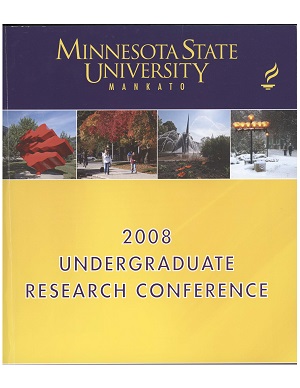Performance Comparison of Two Processing Techniques for New and Used Multiplate Hester-Dendy Macroinvertebrate Samplers
Location
CSU Ballroom
Start Date
21-4-2008 1:00 PM
End Date
21-4-2008 3:00 PM
Student's Major
Biological Sciences
Student's College
Science, Engineering and Technology
Mentor's Name
Shannon Fisher
Mentor's Department
Biological Sciences
Mentor's College
Science, Engineering and Technology
Description
Different species of aquatic benthic macroinvertebrates have different pollution tolerances. Evaluating these tolerances, by way of species richness and abundance observations, can be an extremely valuable tool to evaluate the health of a stream. However, consistent and successful collection of macroinvertebrates is critical to securing reliable data. Artificial substrates can be used to sample the benthic macroinvertebrates in rivers and lakes. Our objective was to determine if there is a difference in macroinvertebrate colonization of new (not previously deployed) and old (previously deployed and processed) multiplate hester-dendy samplers (MHDS). Also of interest were two different techniques utilized by students for removing organisms from the new and the previously used MHDS. Some students have historically scraped organisms from the MHDS, while protocol often calls for the organisms to be picked. We assessed the total number of organisms, total number of families, the total number of ephemeroptera, plecoptera and trichoptera (EPT), and the proportion of families considered to be intolerant of perturbation on new and old MHDS, with half of each processed through scraping and the other half through picking. If the re-use ofMHDS or the method in which they are sampled affects the quality of data, then the ability to appropriately evaluate the health of a stream becomes impaired. Based on preliminary data, the total number of organisms did not differ between the new and previously deployed MHDS; however, the percent EPT is significantly different between the new and the previously deployed MHDS.
Performance Comparison of Two Processing Techniques for New and Used Multiplate Hester-Dendy Macroinvertebrate Samplers
CSU Ballroom
Different species of aquatic benthic macroinvertebrates have different pollution tolerances. Evaluating these tolerances, by way of species richness and abundance observations, can be an extremely valuable tool to evaluate the health of a stream. However, consistent and successful collection of macroinvertebrates is critical to securing reliable data. Artificial substrates can be used to sample the benthic macroinvertebrates in rivers and lakes. Our objective was to determine if there is a difference in macroinvertebrate colonization of new (not previously deployed) and old (previously deployed and processed) multiplate hester-dendy samplers (MHDS). Also of interest were two different techniques utilized by students for removing organisms from the new and the previously used MHDS. Some students have historically scraped organisms from the MHDS, while protocol often calls for the organisms to be picked. We assessed the total number of organisms, total number of families, the total number of ephemeroptera, plecoptera and trichoptera (EPT), and the proportion of families considered to be intolerant of perturbation on new and old MHDS, with half of each processed through scraping and the other half through picking. If the re-use ofMHDS or the method in which they are sampled affects the quality of data, then the ability to appropriately evaluate the health of a stream becomes impaired. Based on preliminary data, the total number of organisms did not differ between the new and previously deployed MHDS; however, the percent EPT is significantly different between the new and the previously deployed MHDS.
Recommended Citation
Valenty, Justin. "Performance Comparison of Two Processing Techniques for New and Used Multiplate Hester-Dendy Macroinvertebrate Samplers." Undergraduate Research Symposium, Mankato, MN, April 21, 2008.
https://cornerstone.lib.mnsu.edu/urs/2008/poster-session-B/19



